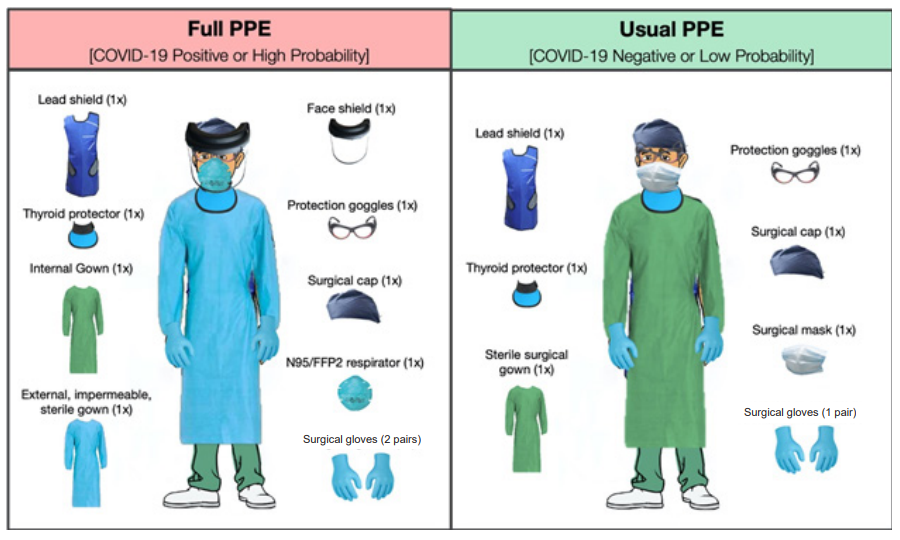Arq. Bras. Cardiol. 2020; 115(3): 558-568
Adapted Catheterization Laboratory Practices during the COVID-19 Pandemic: The Instituto Dante Pazzanese de Cardiologia Protocol
Introduction
The global coronavirus disease 2019 (COVID-19) pandemic caused by the novel severe acute respiratory syndrome coronavirus 2 (SARS-CoV-2) virus began in Wuhan, China, in December 2019, and it has affected over 4.4 million people worldwide, with 302,169 deaths as of May 16, 2020. 1
Though respiratory symptoms are the most common presentation of COVID-19, cardiac involvement is a prominent feature of this disease, occurring in 20% to 30% of hospitalized patients and contributing to 40% of deaths. 2-4 COVID-19-related cardiac involvement has been documented by elevations in cardiac biomarkers, and it often presents with changes in the ST-T segment in the 12-lead electrocardiogram (ECG), for which the catheterization laboratory team is often activated. Furthermore, catheterization laboratory activities must continue for care of non-COVID-19 patients who present with genuine acute coronary syndrome (ACS), ST-elevation myocardial infarction (STEMI), and highly symptomatic stable ischemic heart disease.
[…]
1,573

